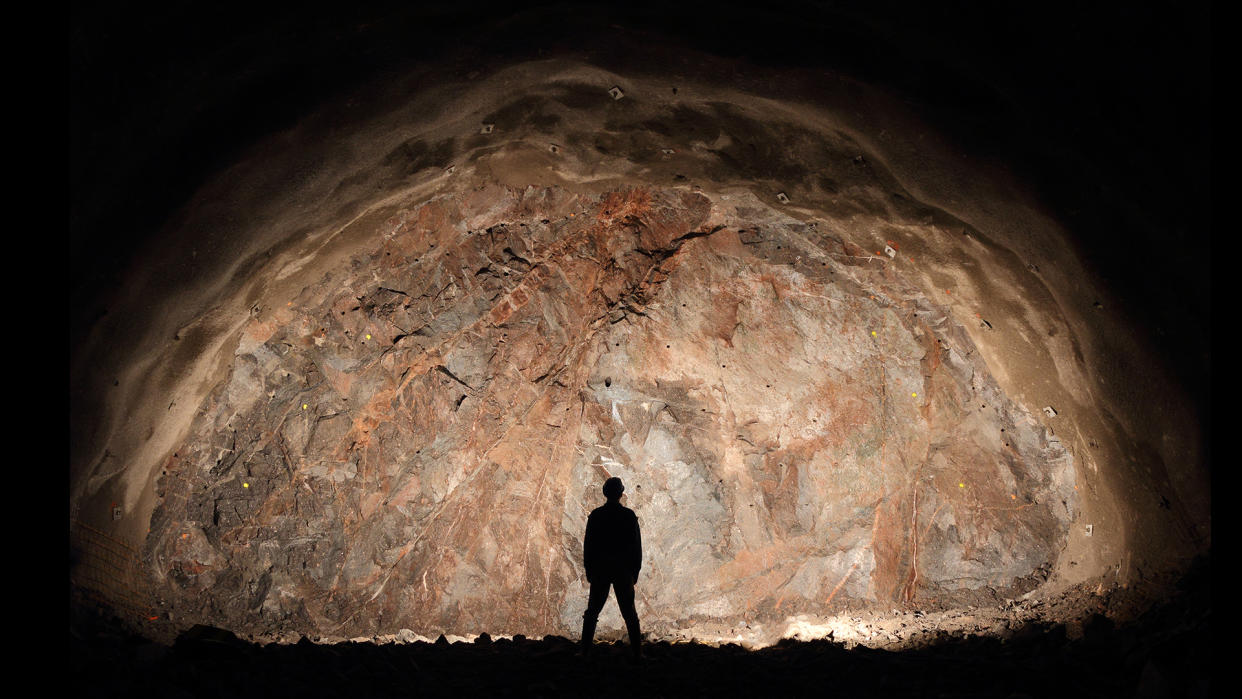What would happen if you drilled all the way through Earth?

Earth's many layers are hidden from view. But what if we could drill through the center of the planet to the other side? What extreme forces and temperatures would we encounter deep within the planet?
Even though drilling through Earth remains science fiction, scientists have some ideas about what might occur based on experience from other drilling projects.
Earth's diameter is 7,926 miles (12,756 kilometers), so drilling all the way through the planet would require a gargantuan drill and decades of work.
The first layer to drill through is the crust, which is about 60 miles (100 km) thick, according to the U.S. Geological Survey. The atmospheric pressure would increase as the drill traveled farther underground. Every 10 feet (3 meters) of rock is equal to about 1 atmospheric pressure, the pressure at sea level, Doug Wilson, a research geophysicist at the University of California, Santa Barbara, told Live Science. "That adds up really quick when you're talking about a large number of kilometers," he said.
The deepest human-made hole today is the Kola Superdeep Borehole in Russia, which is 7.6 miles (12.2 km) deep. At its bottom, the pressure is 4,000 times that at sea level. It took scientists nearly 20 years to reach this depth, according to World Atlas. And that's still over 50 miles (80 km) away from the next layer, the mantle, according to Earth layer data from the USGS. The mantle is a 1,740-mile-thick (2,800 km) layer of dark, dense rock that drives plate tectonics.
Related: How many tectonic plates does Earth have?

The boundary between the mantle and the core is called the "Moho" (short for "Mohorovičić discontinuity"). Scientists first attempted to dig here through the deep seafloor in the 1950s and 1960s with Project Mohole, but they were unsuccessful.
The hole made in the quest to drill through the planet would cave in unless we continuously pumped drilling fluid into the hole. In deep-sea and oil-well drilling, that fluid is a mix of mud that includes heavy minerals, like barium. The weight of the fluid balances the pressure inside the hole with the pressure of the surrounding rock and prevents the hole from collapsing, Wilson explained.
The drilling fluid serves two additional roles: It cleans the drill bit to prevent sand and gravel from gunking up the machinery, and it helps lower the temperature, although it would become nearly impossible to keep the drill cool in Earth's innermost layers.
For instance, the temperature in the mantle is a searing 2,570 degrees Fahrenheit (1,410 degrees Celsius). Stainless steel would melt, so this drill would need to be made of an expensive specialized alloy, like titanium, Wilson said.
Once through the mantle, the drill would finally reach Earth's core at about 1,800 miles (2,896 km) down. The outer core is made mostly of liquid iron and nickel and is extremely hot, with temperatures ranging from 7,200 to 9,000 F (4,000 to 5,000 C), according to the California Academy of Sciences. Drilling through this hot, molten iron-nickel alloy would be especially difficult.
"That would cause a whole range of issues," Damon Teagle, a professor of geochemistry at the University of Southampton in the U.K., told Live Science. The fiery outer core would be like drilling through a liquid, and it would likely melt the drill unless cold water was pumped down.
Then, after 3,000 miles (5,000 km), the drill would reach the inner core, where the pressure is so intense that, despite the scorching temperatures, the nickel and iron core remains solid. "You'd really be at indescribable pressures," Teagle said — about 350 gigapascals, or 350 million times atmospheric pressure.
RELATED MYSTERIES
—What's the deepest-occurring gemstone on Earth?
—Is anything harder than a diamond?
—Why are rare earth elements so rare?
This whole time the drill would be pulled down to the core by Earth's gravity. In the center of the core the gravity would be similar to being in orbit — effectively weightless. That's because the pull of Earth's mass would be equal in all directions, Wilson said.
Then as the drill continues toward the other side of the planet, the pull of gravity will switch relative to the position of the drill, effectively pulling it "down" toward the core again. The drill will have to work against gravity as it pushes "up" toward the surface, back through the outer core, mantle and crust to reverse the downward journey.
If all these obstacles are overcome, the biggest problem once you reach the midpoint is that you'd still have "a long way to go" to reach the other side, Teagle said.

